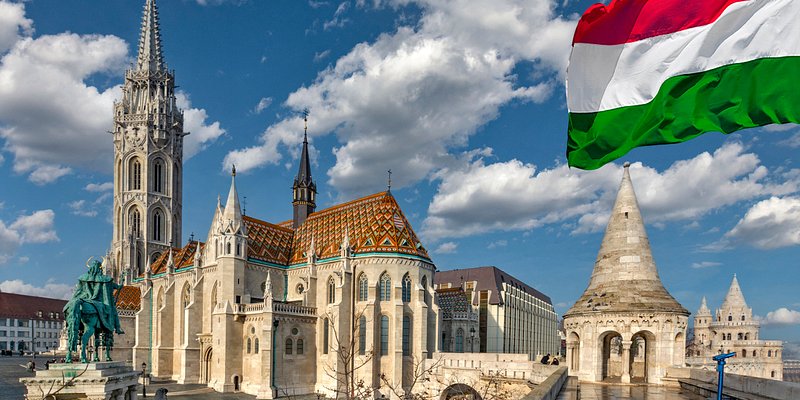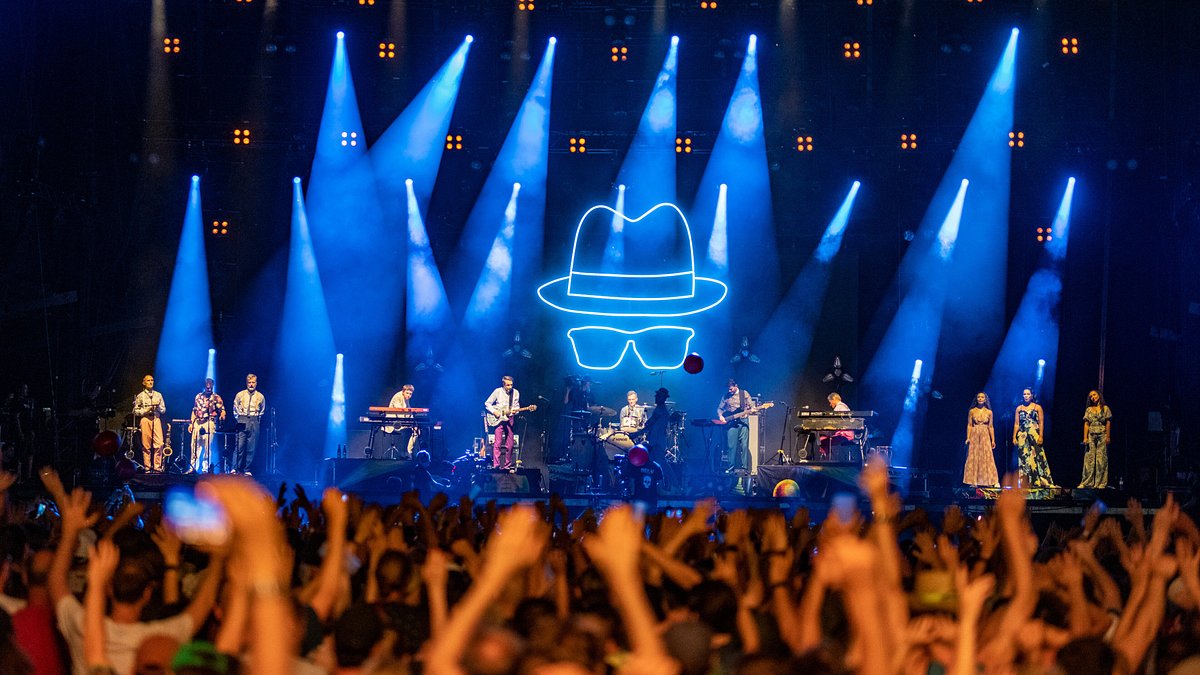3 perfect days in Budapest


From cliff-top castles and steamy thermal baths by day to edgy ruin bars and romantic river cruises by night, there’s always something to do in Budapest. But the Hungarian capital really comes alive after hours meaning you can explore around the clock. And a three day jaunt is the perfect amount of time to experience the best of the city.
My advice: Just don’t forget to wander around. As I learned from a recent trip there, Budapest's most surprising, special spots—underground tea houses, palatial libraries, and secret gardens—are often discovered by accident. This three-day itinerary includes both the major sights and some hidden gems, with plenty of Tripadvisor traveler reviews and ratings so you know you're in good hands.
DAY ONE

MORNING: Eat a market breakfast and soak in a thermal bath
Fun fact: Buda and Pest are two separate sides of the city, divided by the Danube River. Your first day will focus on the hilly, historic Buda section on the west bank. Start the morning in the Neo-Gothic Central Market Hall at the base of the Liberty Bridge. This 19th-century covered market spans three floors (look up at the colorful Zsolnay ceramic tile ceiling). Browse the stalls for fresh produce, fish, meat, cheese, and Hungarian wine, and pick up a pastry to go. Then, cross the Liberty Bridge to Gellért Cave, a church that’s literally carved into the dolomite rock abutting the river.
If you have energy, you can hike a half hour to the top of Gellért Hill, where there’s a citadel and a sweeping view of the city skyline. Or, skip straight to the R&R and continue up the road to the Gellert Thermal Bath. Fans of Art Nouveau architecture will love the opulent tile pools here. Note: Most days are co-ed, but some mornings the entire indoor section is closed off only to men or women.
For a pick-me-up after your soothing soak, there are two cute cafés nearby: Spatula (try the sweet crepes and other freshly baked goods) and Kelet, a charming bookstore, gallery, and coffee shop.
Travelers say: “I was apprehensive as I'm not really a spa person, but I had such an amazing few hours here. Unfortunately the outside pool was closed for winter, but there was still plenty of choice inside with pools of varying temperatures. There were steam rooms, saunas, massage, and cafe areas too. Bit of a maze, so be brave and explore. Towel and flip/flops are essential as well as a swimming cap if you wish to do laps in the big pool. I went on a weekday, so it was uncrowded with no queue.” —Sarah J
AFTERNOON: Explore the famous buildings on the Buda side
Ready for some sightseeing? Hop on the old-school trolly at the bottom of Gellért Hill, which runs along the river to the famous Széchenyi Chain Bridge. Here, you’ll find a vintage funicular—Europe’s second oldest, built in 1870—that whisks you to the top of Buda Hill. (We warned you Buda is steep!) Dating back to the 13th century, the eponymous castle (also called the Royal Palace) has been through a lot in its lifetime: It was razed and rebuilt six times—between the Renaissance, Turkish occupation, Habsburg reign, and WWII—and is still under construction today. You could spend a few hours here, as the complex comprises the castle, the Hungarian National Gallery, the Budapest History Museum, and the National Library. Plus, there are panoramic views of the Pest side, with its iconic Parliament Building, from the castle’s terrace.
Staying on the hilltop, stroll 15 minutes to Matthias Church. Like many important buildings, this church looks very different than it did when it was first built in the 11th century. Today, the Neo-Gothic and Baroque blend of architecture is more reflective of the 19th century. Yet, as beautiful as the façade is—with an ornate spire and eye-popping tile roof—the inside is just as stunning (picture: rich frescos, stained glass windows, and intricate stonework).
Beside the church is Fisherman's Bastion, arguably Budapest’s most popular viewpoint. This former fish market (hence its name) sits on the edge of Buda’s ramparts. Wander around—and on top of—the fairytale towers and cloisters. If you’re lucky, you can snag a seat at one of the cafés literally built into the walls.
BUDA SIGHTSEEING TOURS
- Cyclists will love this three-hour e-bike tour, where you’ll pedal by St. Stephen's Basilica, the Hungarian Parliament Building, and Fisherman's Bastion, among other sights.
- On this half-day sightseeing tour, a guide will drive you around while giving the history behind Budapest’s most famous landmarks, including Buda Castle and Gellert Citadel.
- Budapest’s ruin bars stand out on this evening tour. You’ll sip and snack around the Jewish Quarter, trying Hungarian drinks like pálinka and unicum as well as street food favorite, lángos.
EVENING: Enjoy dinner and a view
At golden hour, walk along Tóth Árpád Setany, a promenade that circles the walled fortress. You’ll get a 360-degree view of the Buda side, which is particularly pretty around sunset. If you want a happy hour drink (or a perfectly buttery, flaky croissant), stop at Rojt és Bojt, which is hidden in a leafy staircase on the way down the wall.
Save room for dinner at Déryné, a quick five-minute walk away. This brasserie has a lovely outdoor terrace, an in-house bakery, and live music every day. The menu (a fusion of Hungarian and French food) is equally impressive. We loved the crispy eggplant schnitzel and the oxtail tortellini, served with a dollop of Arabic yogurt and freshly grated parmesan cheese. Note: This bistro also has a buzzy Sunday brunch with DJs spinning upbeat records.
In the mood for a nightcap? Take the bus through the tunnel (it’s less than five minutes) to Leo Rooftop Budapest, a posh circular cocktail bar with floor-to-ceiling windows framing the Széchenyi Chain Bridge and the elegant Four Seasons Gresham Palace hotel. (Tip: Make reservations in advance.) Another unique overlook is from the rooftop hot tub at Rudas Baths, which is open from 10 p.m. to 3 a.m. on weekends (yes, you read that right), so you can see the city lit up at night. The 16th-century spa has traditional Turkish baths and saunas, too.
DAY TWO

MORNING: Take a walking tour of the Pest side
While you won’t be climbing as many stairs on the Pest side, prepare to hit the ground running—there’s tons to see on the flatter eastern bank. The best way to get the lay of the land is on a guided walking tour. Here, you’ll learn about Hungary’s turbulent past as well as stop at Budapest’s main landmarks. Most begin at the ferris wheel in Elizabeth Square and head north toward St. Stephen’s Basilica. Tip: The Catholic church has an unbeatable view from the top of its Neoclassical dome. Turn up Andrássy Avenue, a wide, leafy boulevard that looks straight out of Paris. This will lead you to the Hungarian State Opera House and Drechsler Palace (reopened as a W hotel in 2023).
Next, make your way to the riverfront, where you’ll learn the haunting history behind the Shoes on the Danube Bank Holocaust memorial before stopping beside the striking Neo-Gothic Hungarian Parliament Building. You need to book a 45-minute tour to go inside, but it’s worth the extra time to see the pillared hall, grand staircase, and crown jewels. At the end of the tour, loop back to Vörösmarty tér square and treat yourself to some sweets at Café Gerbeaud, a famous confectionery that’s been operating since 1858.
BUDAPEST WALKING TOURS
- Avoid the crowds on this three-hour private guided tour. You’ll explore hidden gems and big attractions such as the Parliament building, Liberty Square, and the Chain Bridge.
- Want to taste Budapest’s best bites? This food-focused walking tour passes some of the city’s top landmarks while making stops at local restaurants for tastings.
- If you’re short on time, consider this all-in-one tour, which hits landmarks like Széchenyi Spa and the Fisherman’s Bastion. Plus, you’ll get a slice of strudel at the end.
AFTERNOON: Wander in the Jewish Quarter and Palace District
Continue down Váci u, a pedestrian street with shops and cafés that spill onto the sidewalk, until you reach Gerlóczy Kávéház restaurant. Grab a table and tuck into a classic Hungarian lunch. The stuffed peppers are to die for and the wine list has interesting local labels. Then, poke your head into Párisi Udvar Hotel Budapest to see the art nouveau architecture from its former life as a shopping arcade.
Turning north to the famous Jewish Quarter, you’ll see the massive Dohány Street Synagogue (Europe’s largest, seating 3,000 worshipers) and the adjacent Hungarian Jewish Museum and Archives on the corner. It’s worth looking inside to see the soaring arches, lavish chandeliers, and intricate woodwork. Wander 10 minutes east on Wesselényi utca to Massolit, a cozy bookstore with vintage furniture and a peaceful backyard. Whether you’re still hungry or not is besides the point—you must check out Mazel Tov, an Israeli restaurant that renovated a ruin bar and turned it into an indoor garden with green walls and sun-drenched skylights.
Cross Rákóczi út street divides the Jewish Quarter and the Palace District. The latter is an affluent neighborhood with grand mansions that have been converted into cultural institutions. For instance, there’s the Hungarian National Museum and the Metropolitan Ervin Szabó Library, a jaw-dropping hidden gem. During happy hour, join the locals at Mikszáth Kálmán tér, a vibrant square surrounded by bars. Prefer wine? Walk over to Tasting Table, where a team of knowledgeable oenophiles walk you through Hungary’s wine scene in a secret cellar. If you don’t drink, don’t worry: Sirius teahouse is tucked underground next door.
EVENING: Bar hop in the Jewish Quarter
Fuel up for a long night at the upscale Negro Mangalica Bistro & Bar, where the chefs take a creative twist on traditional Hungarian food. You must order the melt-in-your-mouth pork cheek with a red wine sauce and potato dumplings. Finish it off with the “floating island” dessert.
Now that you have some food in your stomach, it’s time for a Budapest bar crawl. For more mature patrons, DOBLO features live jazz, natural wine, and huge cheese platters in a sultry brick bar. Otherwise, join the younger crowd at a ruin bar, Budapest’s grungy dive bars and dance clubs housed inside dilapidated warehouses and courtyards. Szimpla Kert is the most famous (and funky) one, and the long lines snaking around the block reflect its popularity. The three-story Instant-Fogas is another great choice, with each room dedicated to a different music genre. (We were partial to the rock and roll room.) Gozsdu Court is a vibrant arcade with restaurants, bars, and karaoke lounges on each side. If you have late-night munchies, you’re bound to find something to satisfy your craving at the open-air Street Food Karaván court. Personally, we like Lángosom’s classic Hungarian snack: fried dough with cheese and sour cream on top.
Travelers say: “If there is an activity that symbolizes Budapest nightlife, it’s the ruin bars. In a nutshell, they’re built in abandoned post-World War buildings in the Jewish Quarter and have multiple bars under one roof. Known locally as romkocsma, the worn-down look is created with wall graffiti, flea market furniture, and scattered lighting. Szimpla Kert is the pioneer of all ruin bars. It’s the best place to start exploring, though there’s always a huge queue to enter.” —Dr. F
DAY THREE

MORNING: Stroll through Városliget Park
After a whirlwind trip, take it easy on your final day in Budapest. Meander north of the Jewish Quarter to the Insta-worthy New York Café. This brunch hotspot draws a big crowd but mainly due to the glamorous interiors. If you forgot to make reservations (and don’t want to wait in line), we suggest you continue walking to Freyja, which makes the best pan au chocolat we’ve ever tasted. Get a few sweet treats—likely still warm from the oven—to go, so you can nibble on them while you stroll through Városliget Park. This massive green space is home to the towering Vajdahunyad Castle, the cutting-edge House of Music Hungary, and the century-old Széchenyi Baths.
Tip: If you’re an early riser, make a beeline to Széchenyi first thing in the morning when there are fewer crowds. Meanwhile, night owls might prefer the after-dark “sparty,” complete with EDM beats, rave lasers, and Cirque du Soleil-like acrobatics.
SZÉCHENYI THERMAL BATH TOURS
- Skip the long lines at Széchenyi on this combo excursion. You’ll get three hours in the thermal baths as well as a four-hour drive and guided tour of Budapest.
- Get the VIP treatment with tickets to the Palm House at Széchenyi. You’ll have your own private pool, sauna, and steam room as well as plush lounge chairs in a tranquil greenhouse-style space.
AFTERNOON: Bike around Margaret Island
Once you’ve dried off, take the metro (right outside the bathhouse) to the Újlipótváros residential area that’s chock full of charming cafés, gourmet grocers, and design-forward restaurants. If you need a little caffeine, there are endless options to choose from: Madal Café, Partisan Coffee Shop (pick up a plant-based bite), and Italian-inspired Caffé Daje. To try some Hungarian cheese, meats, and treats, pop into Fromage. Or if you’re really hungry, UnoMas Tapas Bar is usually packed with locals (always a good sign).
After, take the tram directly across the bridge to Margaret Island. In the middle of the Danube River, splitting the Buda and Pest banks, this 250-acre green space is the city’s own Central Park. Pedestrian promenades encircle the island, giving families plenty of room to jog, bike, or pedal cute four-wheel carts around. As far as sights to see, there are plenty. We loved the 13th-century Dominican convent, the tranquil Japanese garden, the art nouveau water tower, and the outdoor movie theater and beer garden (open seasonally).
EVENING: Cruise along the Danube River
We’ve saved the best for last. Sure, it may sound touristy, but you can’t miss a classic Danube River cruise. We recommend going in the evening to see the Hungarian Parliament glow in gold. You can choose a short sightseeing tour or a multi-course dinner cruise with live music (a romantic date night option). Either way, you’re sure to have a fantastic time and appreciate the city lit up at night.
Travelers say: “The views were spectacular, everything looked stunning lit up with the reflections in the water. The audio tour was very informative and easy to access. Staff were all very friendly and to our surprise, the champagne was very good. It was the highlight of our trip to Budapest.” —Helen B
Know before you go
As with most European cities, summer is the high season (meaning higher prices, too). October and November are lovely months to visit as there are fewer crowds, and the cool fall weather is perfect for enjoying the steamy thermal baths. Budapest is also enchanting in December, when the city is blanketed in snow and twinkling with Christmas lights.
Budapest is an all-day, all-night destination. You don’t need to wait until the weekend to party here. Restaurants, bars, shops, and popular attractions are open every day of the week. However, most museums are closed on Monday.
As the capital city, Budapest has longer work hours (between 8 a.m. and 5 p.m.). Restaurants and bars are open late as well, especially the ruin bars where you can dance until (almost) dawn. Last call is usually at 3:30 as they close around 4 a.m. Some independent shops shutter early on Friday afternoons.
Belváros: In the heart of the city center (on the Pest side), you’ll find a handful of high-end hotels. Párisi Udvar is set within a gorgeous art nouveau arcade while Matild Palace has the glamorous Duchess rooftop bar, where guests get first dibs on tables overlooking the Danube and Buda’s riverbank. The Dorothea Hotel, part of Marriott’s Autograph Collection, just opened last November after renovating a regal mansion to create its spacious suites.
Jewish Quarter: For groups of friends looking to spend late nights out at the ruin bars, the Jewish Quarter is the place to be. Airbnbs and private apartments are more popular here, but in-the-know travelers can find gems like the Boutique Residence. Join a younger crowd at Maverick City Lodge to be in the center of all the action.
Public transit: Budapest has an extensive public transportation system, including buses, trams, trolleys, a metro, and even ferries across the Danube. Go to an agent or ticket machine to pick up an unlimited 72-hour pass. Don’t forget to validate your ticket before you hop on or else you might have to pay a fine.
Taxi: It’s best to avoid taxis (unless you speak fluent Hungarian, that is). A safer bet is to have your hotel call a cab or use rideshare apps like Uber.
Airport transfer: Although Ferenc Liszt International Airport is outside Budapest, it’s super easy to get to the city center. Take the 100E Airport Express shuttle directly to Deák Ferenc tér. The journey takes about 40 minutes, and buses run every 10-20 minutes during the day and 30-40 minutes late at night or early in the morning. Note: This trip is not included in the regular transit card; you’ll need to buy a separate ticket onboard.



